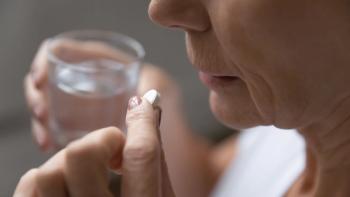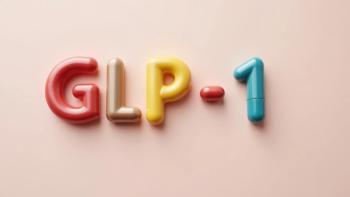CAFFEINE IS A DRUG. SO IS STARBUCKS THE LARGEST DRUG DISPENSING CHAIN IN THE WORLD?
As a pharmacologic agent (methylxanthine), the stimulant caffeine works by blocking multiple receptors in the body, most notably those related to adenosine, causing its buildup and then saturation. When the blocker—in this case, the coffee—wears off, the body is thrown into withdrawal as it battles the overwhelming swarm of chemicals now connecting with those receptors.
With more than 15,000 Starbucks locations in the US and more than 38,000 worldwide,1 its baristas may be the “pharmacists of the people.” If you don’t believe me, try asking the average Starbucks regular if they would rather wait in line for their antihypertensive prescription or wait in line for their Ventisized (20 oz) Pike Place Roast, containing roughly 410 mg of caffeine.2
STARBUCKS’ OPERATIONS AND TRANSFORMATION FEEL FAMILIAR
From a local operations perspective, Starbucks operates much like a pharmacy with both walk-up and online orders, most of them now coming from the refill section of the Starbucks app (what customers ordered previously). Customers want and need their product and still appreciate good service. The former is often the priority (“Give me the product and give it to me now!”), whereas the latter is a bonus because the consumer is likely to be experiencing withdrawal at the time of ordering their prescription/drink.
Though third-party claims and physician orders are not barriers to access and service in these caffeine dispensaries, the business model historically has been somewhat parallel to pharmacy. Chain pharmacies have emerged over the past 4 decades, with a focus on growing the number of locations and the number of prescriptions, and there are nonchain and even institutional pharmacies (usually work related) that have focused on neighborhood, on-site, and/or boutique strategies and offerings. With every passing year, it feels like there is increasing pressure to emphasize product throughput over service experience.
About the Author
Troy Trygstad, PharmD, PhD, MBA, is the executive director of CPESN USA, a clinically integrated network of more than 3500 participating pharmacies. He received his PharmD and MBA degrees from Drake University and a PhD in pharmaceutical outcomes and policy from the University of North Carolina. He recently served on the board of directors for the Pharmacy Quality Alliance and the American Pharmacists Association Foundation.
In response to environmental shifts and market trends, Starbucks is prioritizing throughput and more efficient machines and processes. Unsurprisingly, its corporate office has discovered that scheduled orders, drive-throughs, and a streamlined ordering process all reduce the need for staff on a per-cup-order basis, much like faster prescription processing leads to a reduced need for full-time pharmacist hours.
THE GREATEST PHARMACY LIE EVER TOLD
For years, we’ve heard talking heads say we need to empower technicians to free up pharmacists’ time. We’ve been told that machines need to fill the medications and that a long line of prescription filling enablement tools need to be implemented to provide the pharmacist with more time—ostensibly to provide counseling and patient care. However, there has never been a business model centered around pharmacist care delivery. As in any retail or product sales model, those coffee shops have been able to use that premium (additional margin) to cover the cost of any service extras provided. And as fewer and fewer shops provide services, consumer expectations drop and the c-suite views services and personnel not as part of the offering, but rather as another cost structure to be minimized.
Yes, pharmacists as service providers is a viable business model, but it hasn’t yet been scalable or historically favorable to regulators, legislators, health plans, or pharmacy benefit managers at a level needed to produce a robust marketplace opportunity. So we’ve been lied to in each instance when pharmacists have been told to accept commoditization on the promise of transitioning to a new revenue model that hasn’t matured. If there is no business model for services, it simply translates to more scripts per hour or fewer hours for pharmacists.
THEN WHAT IS THE BUSINESS MODEL?
We are at a crossroads—a choice between a commoditized, loss-led pharmacy business model, where the lowest cost to dispense wins, or the creation of a services-based model that approaches a level observed with COVID-19 response. We need to decide quickly, as the next few years will determine the next generation of pharmacy practice. The idea of a sustainable retail model where every pharmacy accepts the lowest reimbursement rate to stay in-network, whilst providing any level of service or practice besides a drive-up, app-based, product throughput-based operation is complete fallacy. The simple math of buying and selling a product at the same price (or worse) overcomes any fantastical service model unless that services model stands on its own economically (or better, with service margin making up for a retail loss in the case of belowcost reimbursement).
Pharmacy owners and many chain executives are now having to choose between the traditional metrics of success (ie, number of prescriptions filled and gross revenue) and the now more important gross margin and net profit (after payroll and other expenses). The latter requires a mindset and business model change, as well as acceptance that not every patient will be able to use their insurance or discount card and that pharmacies need to take advantage of new access to test orders, procedures, billing codes, and an explosion of cash-paying patients looking for convenient, trusted, and friendly care delivery.
AS A 401(K) HOLDER, GIVE ME THE RETURNS. AS A COMMUNITY PHARMACIST ADVOCATE, GIVE ME THE NEW BUSINESS MODEL
I don’t blame the marketplace for the challenges we are facing in pharmacy. We’ve made our own bed by whistling by the long-run graveyard in favor of doubling down on the profitable years of brand-togeneric switches and other high-margin opportunities in the buy-sell retail business model. I also don’t blame any companies for maximizing profits by using efficiencies. I want my 401(k) to do well, just like anyone, and my 401(k) is not responsible for saving any stakeholders in any industry. It’s on us to change the pharmacy business model. Give me margin over revenue and outcomes over number of fills as the drivers of success. The alternative may be OK for investors, but it is getting increasingly ugly (and dangerous) for practitioners.
REFERENCES
1. Number of Starbucks stores worldwide from 2018 to 2023, by region. Statista. November 2023. Accessed July 22, 2024. https://www.statista.com/statistics/218366/number-of-international-andus-starbucks-stores/
2. Caffeine chart. Center for Science in the Public Interest. Accessed July 22, 2024. https://www.cspinet.org/caffeine-chart


















































































































































































































